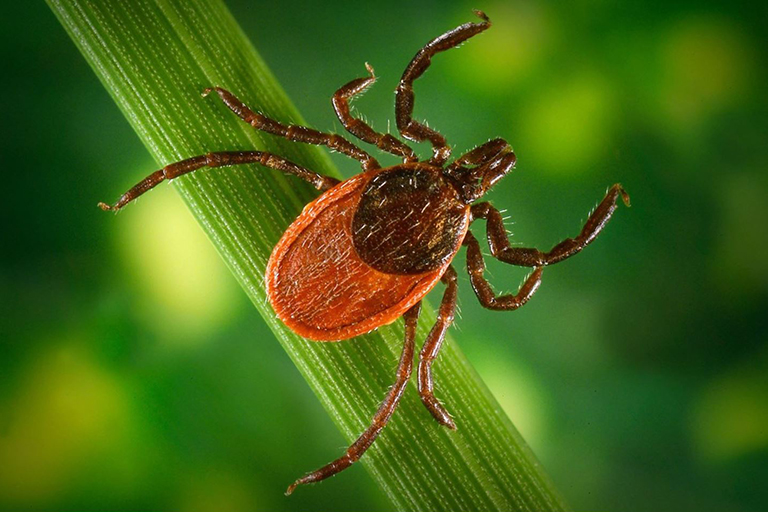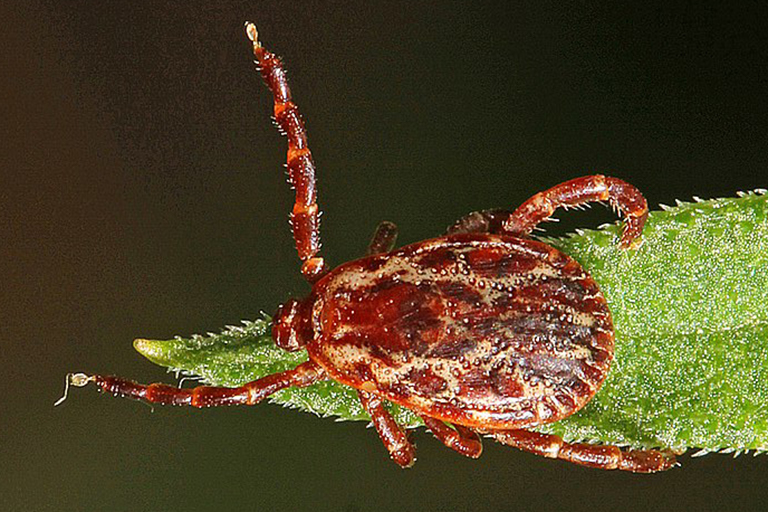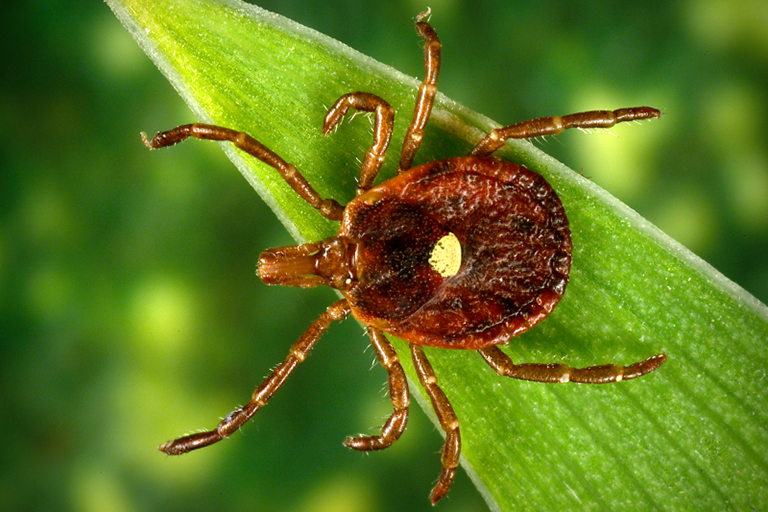Ticks have been getting more attention from residents and public health officials in Indiana. That’s because their presence in Indiana appears to be growing—along with reports of tick-borne illnesses. Multiple factors are fueling tick population growth in the Midwest including warmer year-round temperatures, habitat fragmentation, and growing populations of preferred hosts, such as mice and deer. The important thing for Hoosiers to recognize is that ticks are present where people live, work, and play.
Tick Control in Backyards and Green Spaces
Understanding the risks of tick exposure and implementing tick management practices around homes and neighborhoods can help minimize the health threat posed by ticks in spaces where people frequently spend time outdoors.
Tick-borne Illness in Indiana
At least 20 different disease-causing bacteria, viruses, and parasites are known to be transmitted from ticks to people. Depending on the disease, patients can experience symptoms that range from mild infections to chronic illness or death. According to the US Centers for Disease Control and Prevention, more than 59,000 cases of tickborne disease were reported in 2017, with Lyme disease accounting for more than 4 out 5 cases.
Though cases of tick-borne illness are relatively rare in Indiana, reports have grown steadily in the last decade and official records likely underestimate the scope of the problem.
Indiana Statistics on Tick-borne Disease
132AVERAGE LYME DISEASE CASES REPORTED ANNUALLY FROM 2013 TO 2017, MORE THAN DOUBLE THE AVERAGE ANNUAL CASES FOR THE PREVIOUS 5-YEAR PERIOD
232CASES OF ROCKY MOUNTAIN SPOTTED FEVER CONFIRMED FROM 2013 TO 2017, MORE THAN 13 TIMES THE NUMBER OF CASES RECORDED IN THE PREVIOUS 5-YEAR PERIOD
180CASES OF EHRLICHIOSIS CONFIRMED FROM 2013 TO 2017, MORE THAN FIVE TIMES THE NUMBER OF CASES RECORDED IN THE PREVIOUS 5-YEAR PERIOD
What Ticks Need to Thrive and Reproduce
Ticks have long life cycles that span multiple years and encompass multiple developmental stages—from egg to larvae to nymph to adult. Understanding the conditions ticks need to thrive and reproduce is the first step to controlling their numbers. Generally, ticks prefer:
- Temperatures that are not too hot nor too cold
- Thick leaf litter or moist ground cover
- Access to blood meal hosts, such as mice, squirrels,
chipmunks, birds, or deer
Taking away one or more of these conditions is likely to discourage nearby tick populations.
Practices to Discourage Ticks in Yards and Green Spaces
There are multiple strategies that homeowners and green space managers can apply to reduce the risk of tick encounters.
Keep the grass cut short (1 to 3 inches long) to ensure a tick-resistant environment that dries out quickly and does not retain moisture.
Remove moisture-trapping leaf litter or move it to areas that are more than 2 meters away from places frequented by people and pets.
Trim shrubs to allow sunlight to penetrate through foliage and minimize the dark, damp spaces around plants.
Create a 3-foot barrier composed of gravel or mulch between tick habitat and lawn to keep ticks at bay and remind people not to enter tick habitat.
Discourage the presence of animals that host ticks by installing a deer fence, eliminating seed waste from bird feeders, and removing rodent-friendly invasive species, such as Japanese barberry, Eurasian honeysuckle, and multiflora rose.
What Kind of Tick is it?

Blacklegged Tick
Transmits: Lyme disease, relapsing fever, anaplasmosis, ehrlichiosis, babesiosis, Powassan virus
What to know: Blacklegged ticks are most active in the spring and summer, however, adults pose a risk any time the temperature is above freezing.

American Dog Tick
Transmits: tularemia, Rocky Mountain Spotted Fever
What to know: American dog ticks are typically found in areas with little or no tree cover and can survive any life stage for two years without a host.

Lone Star Tick
Transmits: ehrlichiosis, tularemia, Heartland virus, Bourbon virus, Southern tick-associated rash illness
What to know: Distinguished by the white dot on adult females, the lone star tick has been linked to alpha-gal syndrome, an allergic reaction that occurs in people after eating red meat.
What to do if you find a tick on you
If you find a tick attached to your skin, there’s no need to panic—the key is to remove the tick as soon as possible using fine-tipped tweezers.
- Using tweezers, grasp the tick as close to the skin’s surface as possible.
- Pull upward with steady, even pressure, trying to avoid twisting or jerking that
can cause the mouth-parts to break and remain in the skin. - After removing the tick, thoroughly clean the bite area and your hands with
rubbing alcohol or soap and water. - Dispose of a live tick by putting it in alcohol, placing it in a sealed bag, or
flushing it down the toilet. - In the weeks following removal, monitor the bite site and tell your doctor immediately if you develop a rash or fever.

All Hoosiers need to be aware of the presence of ticks near their homes and neighborhoods and take steps to reduce the risk of exposure.
Karo Omodior, IU School of Public Health


